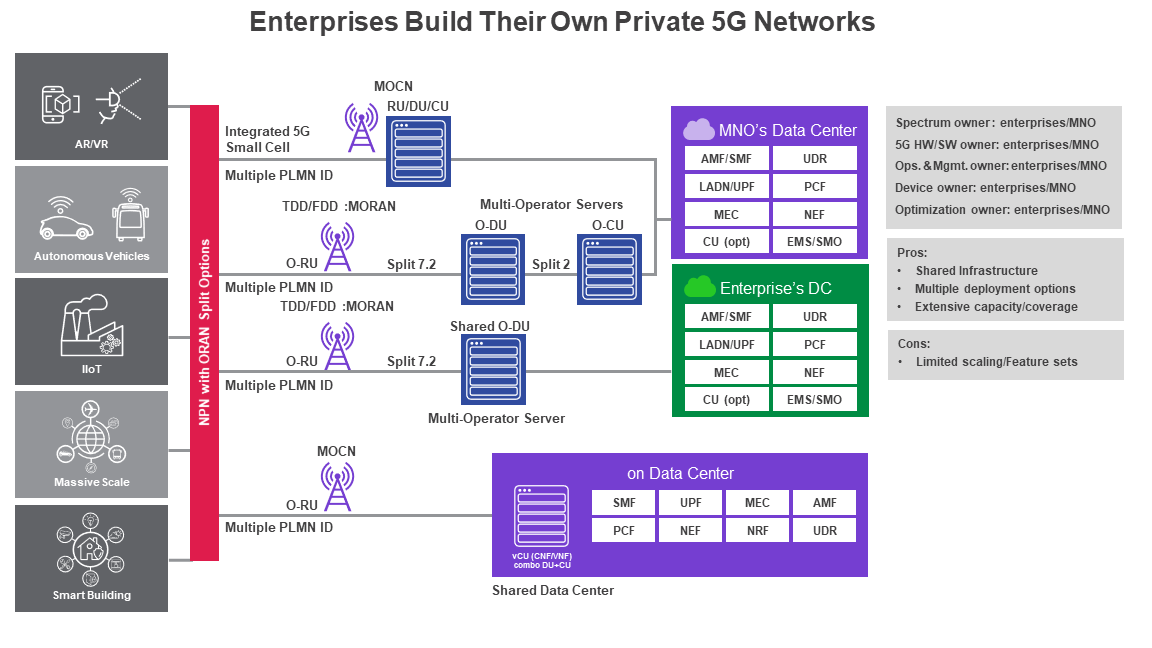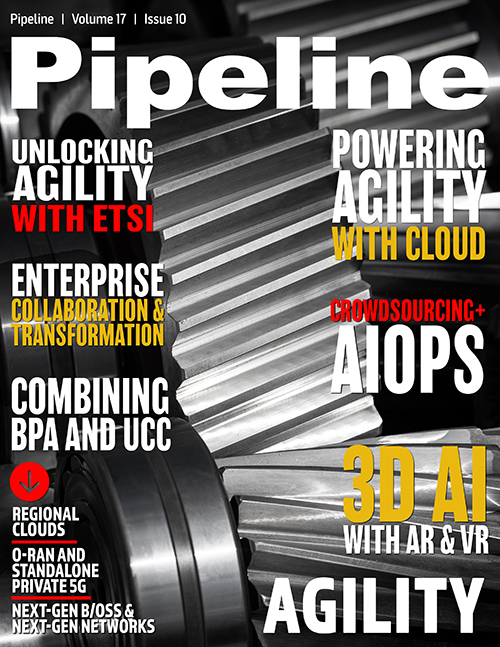Standalone and the 5G Private Network Opportunity
The benefits of this design are security and privacy control for user data, such as security camera footage or videoconferencing sessions, which stays within a private enterprise network.
Shared infrastructure model of SNPN: in this deployment model (see Figure 4), the enterprises lack the most demanded and reliable licensed RF spectrum (FDD) for high penetration and propagation, though they may still want to use NR-U (TDD-CBRS) for user plane and capacity-centric applications. Hence a shared NR-RAN concept can be considered here. This concept assumes the enterprise and an MNO agree to various resource-sharing mechanisms (either RAN sharing [MORAN/MOCN], 5GC sharing, or both).
A RAN sharing model can be deployed in many ways: Unlicensed TDD with the MNO’s FDD in carrier aggregation or dual connectivity mode such as CBRS + licensed FDD, licensed C-band + shared FDD, and mmWave + licensed FDD. There can be other combinations like unlicensed TDD, licensed TDD, carrier aggregation, and dual connectivity modes such as CBRS + C-band or mmWave + CBRS-band. 3GPP’s Release 15/16 has advanced 5G features that enterprises can leverage as a complementary overlay of an MNO’s FDD low band (<2GHz) to extend the downlink coverage and split off the uplink to FDD like in “supplement uplink” (SUL). On the other hand, MNOs benefit by extending their indoor coverage without additional cost. Mobility management, quality of service (QoS), and session transfer all depend on this mutual effort and interface connectivity.

Figure 4: Shared infrastructure model of SNPN
click to enlarge
Multiple topologies can be considered when SNPN is deployed in a shared infrastructure. This includes having a RAN/5GC (DU/CU-UP/LADN) user plane on-premises that belongs to the enterprise, while a control plane resides in an MNO’s data center. This approach is useful for reducing user plane latency while improving user plane privacy. Conversely, enterprises can also let MNOs deploy everything on-premises for the MNO’s users that are on the enterprise’s property. This can be an expensive approach, but it suits certain providers such as hospitals or healthcare providers that prefer to keep user profiles— along with the control plane and the user plane—confidential.
But such shared deployments bring more challenges. Enterprises and MNOs need to consider the regulatory aspects and interference challenges associated with unlicensed spectrum (CBRS or NR-U), authorization of licensed spectrum operations from national regulators, and the interworking requirements with an MNO’s network. Additionally, consideration must be given to the privacy, network security, net neutrality and isolation needs of the enterprise’s SNPN assets and users.
PNI-NPN Deployment Models
As explained earlier, an NPN model (private 5G), when associated with a nationwide MNO network through pre-defined network interfaces, is known as the PNI-NPN model. Compatible user equipment (UE) can accommodate all services not limited to mobility, session transfer or voice with multi-data connections from both networks, based on its location. UE credentials and subscriptions are available at common databases owned by the MNO. As a result, subscriber confidentiality is challenged. A key differentiation is that PNI-NPN models provide more advanced features like network slicing, larger coverage areas and multi-services scenarios as compared to an SNPN model where both domestic inbound and outbound roaming are assumed to be supported.



















